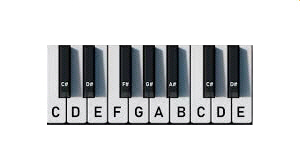In Scales Aren’t Just a Fish Thing, we study in a very structured way. Again, a lot of people look in from the outside thinking it is simply like the kiddie pianos with colored keys. It isn’t. This method goes in the backdoor of learning, skipping the road blocks and short circuits that have been built up over the years.
They simply say, “I read black notes and can listen to a song, so I’ll just keep trying to do this. It doesn’t work that way. There is no growth when you continue to the more difficult techniques and songs. You need guidance. There’s a very specific structured sequence we go through.
One of the things you will begin to understand is it’s not necessarily a song. Learning the song is a process of conquering the difficult short circuits you might have in your unique learning process. It could also be simply a lack of awareness of differences in how music or information is processed.
There are certain mental requirements to succeed. First and though it won’t seem to be important, you need to know ‘why’ you want to do this or as it becomes difficult you won’t have the determination to continue.
There’s a certain process, and as we progress, we will go deep into music theory, learning patterns, body dominance and the how to’s of making music.
This is a supercritical one, and that is the act of actually playing music. All the rest is the icing on your life’s cake.
Learning to play is a sequence. There is a specific sequence.
First you listen to the music…. A lot.
Second, you take the hardest part of the song and get it down perfectly. Scales Aren’t Just a Fish Thing Online School actually gives you these preview spots first. Play it until you can play with the mp4 video of that preview spot – up to – speed.
Third, take the whole song or parts of the song to work through.
Last….it is important to memorize the song and play it up to speed with the mp4.











 tutorial videos on computer and iPhone/iPad
tutorial videos on computer and iPhone/iPad










































